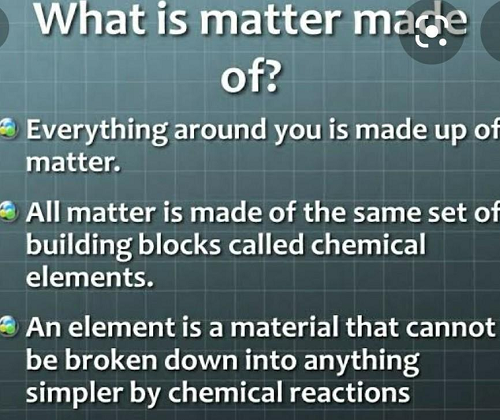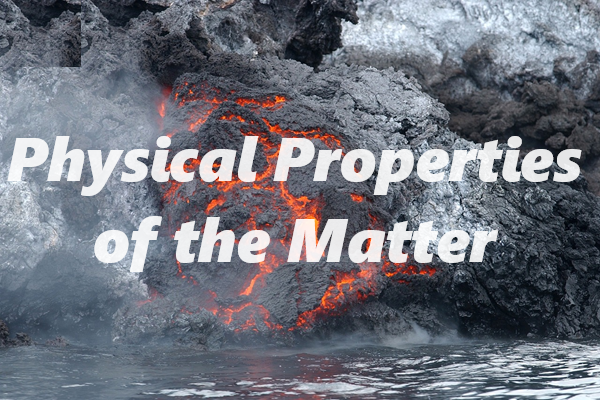Unit 3: Matter
Unit 3: Matter

Unit 3: Matter

Unit 3: Matter
What is matter? The matter is everything around you. Atoms and compounds are all made of tiny parts of matter. Those atoms go on to build the things you see and touch every day. Matter has mass and takes up space (it has volume).
What is mass? Mass is the amount of matter in an object. You might have a small object with a lot of mass, such as a statue made of lead (Pb). You might have a large object with very little mass, such as a balloon filled with helium (He). You should also know there is a difference between mass and weight. Mass is a measure of the matter in an object, while weight is a measure of gravity's pull on an object.
What is volume? Volume is the amount of space something occupies. Words such as significant, tiny, long, or short describe volumes. A marble takes up a small volume, while a star occupies a large volume. Different states of matter will fill volumes in various ways.
Even though matter can be found all over the Universe, you will only see it in a few forms (states) on Earth. We cover five states of matter on the site. Each of those states is sometimes called a phase. Many other states of matter exist in extreme environments. Scientists will probably discover more states of matter as we continue to explore the Universe.
Five States of Matter
What are the central states of matter? Everyone should know about solids, liquids, gases, and plasmas. Scientists have always known about solids, liquids, and gases. Plasma was a new idea when it was identified by William Crookes in 1879. We also like to talk about the Bose-Einstein condensate (BEC). It's a fun state of matter when you remove almost all energy from a system. The scientists (Cornell, Ketterle, and Wieman) who worked with the Bose-Einstein condensate received a Nobel Prize in 2001.
What makes a state of matter? It's all about the physical state and energy in the atoms and molecules. Think about solids. Physical properties of a solid often include 'hard' and 'brittle.' Liquids are fluid, move around a little, and fill up containers. Gases are always around you, but the molecules of a gas are much farther apart than the molecules in a liquid. If a gas has an odor, you'll often be able to smell it before you can see it. The BEC is all about atoms that are closer and less energetic than atoms in a solid.
Changing States of Matter
What is a physical change in matter? Molecules can move from one physical state to another (phase change) and not change their atomic structure. Oxygen (O2) gas has the same chemical properties as liquid oxygen. The fluid state is colder and denser (less energy), but the molecules are the same. Water (H2O) is another example. A water molecule comprises two hydrogen (H) atoms and one oxygen (O) atom. It has the same molecular structure as a gas, liquid, or solid. Although its physical state may change because of different amounts of energy, its atomic structure remains unchanged.
So, what is a chemical change in matter? Let's start with that glass of pure water. If the water formula were to change, that would be a chemical change. If you could add a second oxygen atom to a water (H2O) molecule, you would have hydrogen peroxide (H2O2). The molecules would not be 'water' anymore. In reality, there are a variety of steps that go into creating hydrogen peroxide from water.
Physical changes are related to changes in the immediate environment, such as temperature, pressure, and other physical forces. Chemical changes occur when the bonds between atoms in a compound are created or destroyed. Generally, the basic chemical structure does not change when there is a physical change. Of course, no molecule is safe from destruction in extreme environments such as the Sun.
Vocabulary
Lesson Reading

